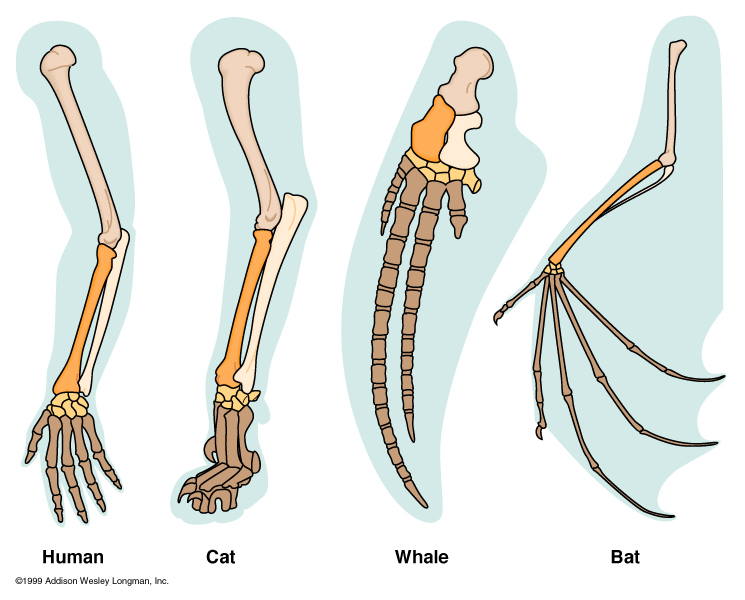For example, you can randomly pick a new pair of tires for your bicycle, OR you can adapt it to a mountain environment. Then, what kind of tires would you pick?
Now, let's look at these structures, they look very alike, right? Why is that?
Count how many bones are there?
It is the same number, isn't it? Only the shape and disposition of the bones has changed.
Such changes, despite being random, bring at least one advantage to the animals that carry them.
For example, if you lived in the ocean would you need legs?
Compare the bones of the whale "arm" with those of the rest of animals in this graph.
Although they are organized in a basic and very similar way, they are not identical.

What looks like the best limb if you want to run?
What about flying??
When animal structures look very alike but they are not quite the same, these structures are referred as homologies.
Homologous structures are structures that have a similar origin (they come from very similar processes), but still are not quite the same. Evolution refers to the adaptations in these structures and how they bring certain advantages to the animals that change.

Look how the babies of different animals develop. Do you think they look quite similar during their very early ages?
Now, try to draw these bone structures.
